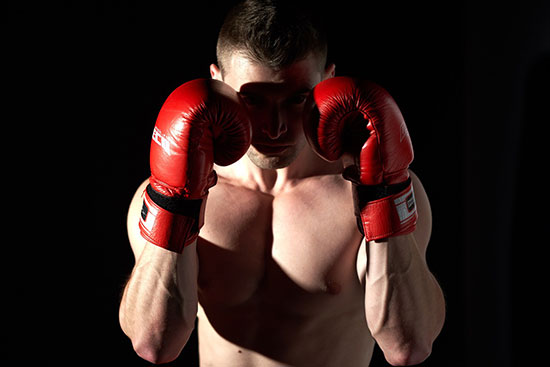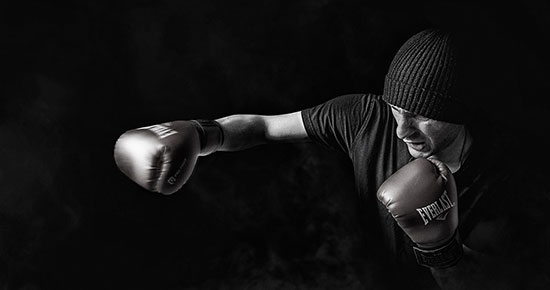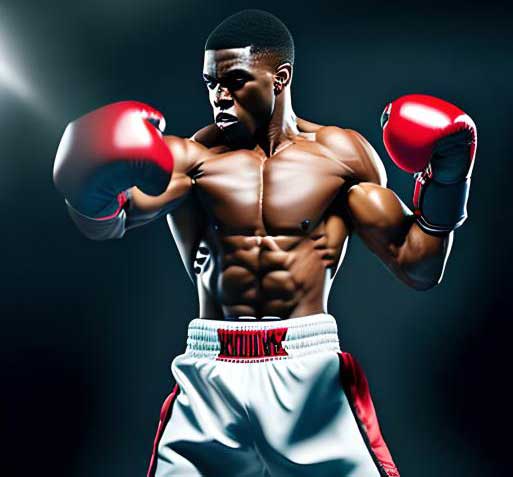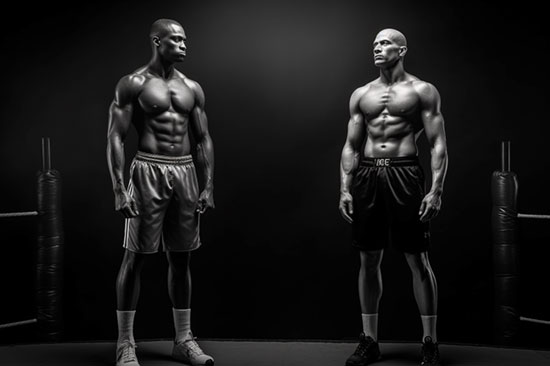Contents
Features of Boxing
Boxing began as a combat sport in ancient Greece, recognized as an Olympic game. Today, it is a dynamic and lucrative industry and a career for professional fighters and entertainment for fans.
Some people do boxing as a workout strategy or for self-defense without getting into tournaments. Boxing, as a sport, exercises the back, upper body, legs and builds extra strength and resilience.
Two opponents in a fight deliver punches to each other for points within a stipulated game time until one emerges to the winner. Different tournaments have varying prizes for winners, and professional boxers lead rather luxurious lives.
As a workout exercise, boxing builds self-defense, discipline and helps the fighter blow off steam. It also improves their hand-eye coordination and stamina.
In either case, the boxers must abide by the set rules at all times, with violations leading to point deductions or disqualification.
A typical boxing match has a predetermined number of rounds, essentially a minimum of four and a maximum of twelve, depending on fighting categories and prevailing scoring systems.
Each boxing round runs for three minutes, after which the fighter rests and recuperates for sixty seconds. Judges award scores and punish wrong moves.
Features of Wing Chun
Wing Chun is a Kung Fu fighting style majoring in close quick combat and strategized defense to overcome your opponent.
Wing Chun is technically not a sport but a defense mechanism that originates in China. This fighting style capitalizes on sturdy legs and apt arm movements to make unexpected lethal blows to the opponent.
It is a soft and relaxed fighting strategy without much aggression. Fighters pay maximum attention to opponent movement details.
Wing Chun passes from teacher to student via verbal instruction rather than in writing. It thus has less clarity for conventional rules or styles with fighters left to explore different fighting strategies.
Properly trained wing Chun fighters have a narrow but high stance, constantly keeping elbows close to the body.
Arms remain in a shielding position in front of vital organs such as the face and groin. Strikes target the belly, groin, chest, and neck. Fighters also have quick and decisive footwork to make turns while maintaining a stance.
The common term settling, in wing Chun, involves one fighter immobilizing their opponent by holding them to the ground and delivering fast. Critical blows before they counteract. Wing Chun improves flexibility, strength, relaxation, and anticipation of violence.
Differences between Wing Chun and Boxing
Wing Chun differs from boxing in several ways, which include but are not limited to:
- Speed
- Timing
- Rules
- Aggression
- Stance
- Footwork
Wing Chun emphasizes high-speed movements and reaction time. The fighter must observe their opponent, anticipate their movements and react in good time to either doge or deliver blows.
Speed is vital to wing Chun, and the faster the fighter, the higher the chances of winning. Boxing, on the other hand, does not rely on speed. Ideally, heavy fighters will be slower.
The speed and reaction time of a boxer is not the primary determinant of the match. While a fast, lightweight fighter might take advantage of slow movements by a heavier opponent, a blow from the opponent might be critical.
Boxing relies on making hits to targeted parts to earn more points from the judges.
In wing Chun, timing is very critical. The fighter must determine the ideal time to deliver blows without giving away their intention.
Timing in Wing Chun also involves waiting long enough for the opponent to make an advance, make a move and take advantage of their instability to bring them down and settle them while delivering blows.
When the opponent makes a move, they lower their guard, and timing is essential to doge hits in good time and make quick blows when the opponent cannot counter.
Boxing, however, does not rely very much on timing, as it does to blow intensity. Timing in boxing only applies when your opponent panics, letting down their guard after a first blow when you must make as many blows as possible before they recover and counter-attack.
Timing is not efficient for boxers if their blow intensity is insignificant.
Wing Chun has no ideal written rules. It is purely a defense mechanism where fighters can explore the weakness of their opponent.
Boxing, however, has a well-known set of rules that govern the behavior and moves of the participants. One cannot make punches below the belt, head butt, spit or push an opponent.
Wrestling, tripping, or biting an opponent is also against the rules. Violation of either one or several set rules leads to automatic point deduction or disqualification depending on the magnitude of the foul.
Wing Chun is a relaxed fight without aggression or outright brutality. The intention is to outsmart the moves of your opponent in a way that benefits you.
There is usually no malicious intent to cause permanent physical harm but instead, inflict sharp pain to immobilize your opponent. Boxing, on the other hand, is brutal and maliciously intended.
Fighters at times lose their hold and wrestle, bite or spit at each other’s faces. In boxing, blows are harsh and aimed to cause physical harm. Boxing fighters are aggressive and sometimes carry grudges outside the game.
Wing Chun is a master of stance at both hands and feet, resting and attack position. The trick to Wing Chun is to disrupt the opponent’s balance and posture, making them vulnerable to attacks.
Fighters maintain their stance by standing with legs apart in a mini squatting position for better stability. In both attack and guard positions, the participants must maintain a stable posture.
Boxing relies on a stance that permits rendering the best punches and blows to opponents. Boxers, therefore, stand sideways, with your dominant hand furthest from your opponent and the other half raised to counter attacks.
Wing Chun relies heavily on foot movements to deliver trips and hits and also doge hits. Fighters learn how to stand on one leg and maintain stance when attacking or moving to evade blows. Boxing, however, does not involve much footwork except moving forward or backward during attacks.
As a sport, boxing has definite rules, and the game ends under any these four conditions:
- A knockout out- one fighter knocked down and will not rise until the referee counts to ten.
- A technical knockout- One participant is critically hit and incapacitated to continue fighting.
- When one fighter earns disqualification for violating rules.
- One boxer has more points after twelve-round fights.
Also, boxing has protection gear such as head and mouthpieces, gloves, and wrist straps. Wing Chun does not emphasize any of this equipment since it is a self-defense mechanism rather than a sport.
Conclusion
In conclusion, Wing Chun is self-defense style while boxing is majorly a sport. These two fighting styles are very different and vary in several aspects that can be summarized as follows:
| Wing Chun | Boxing | |
| Speed | Speed is critical | Speed is not the determining factor |
| Timing | Heavily relies on timing | It does not heavily depend on timing |
| Rules | Has no written rules | Has well-stipulated rules and consequences of violation |
| Aggression | Not aggressive | Highly aggressive and brutal |
| Stance | Apt stance in attack and defense | Standing upright is enough |
| Footwork | Heavily reliant | Fairly reliant |
| Generally | Has no gear | It is a sport with fighting and protective gear |





